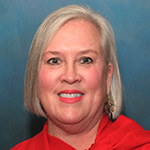Homelessness in Kentucky Part 2: Children and Youth
Register now for the KLC Homelessness Virtual Summit: Housing and Hope, November 9
The Kentucky League of Cities (KLC) has been exploring resources to increase awareness regarding homelessness in our cities. It is a huge topic, but when you break it down, it’s much easier to get a sense of how it impacts local communities and people throughout our society.
Most homeless persons in Kentucky are invisible, in that others may have no idea that they are without a home. Typically, when we think homeless, we envision a person living outdoors, on the streets, in parks, hidden encampments, and occasionally in hotels or shelters when resources can be provided. But there are thousands of people in Kentucky “couch surfing,” living in cars and moving from place to place without a permanent home. And many of them are children.
Nearly 24,000* school-aged children are housing insecure. In addition, according to the U.S. Department of Education Office of Planning, Evaluation and Policy Development, one in 14 Kentucky children under age six are experiencing homelessness.
As schools have now returned, it’s important for city official to know that there are student resources.
The McKinney- Vento Act (MV), is a federal law that requires public school districts to identify children and youth experiencing homelessness and to remove all educational barriers in order to provide these students with academic continuity and consistency. Under the McKinney-Vento Act, homelessness is defined as “lacking a fixed, regular, or adequate nighttime residence” so it’s typically schools that capture data relating to families and children in transition.
Families in Transition (FiT) is the name of an Erlanger Elsmere Schools program that receives Title 1 funding to provide required educational assistance to students experiencing homelessness. It addresses the McKinney-Vento mandates. All public schools are required to provide services and designate a homeless liaison.
Shelley Werner, M. Ed. is the Families in Transition Coordinator with the Erlanger/Elsmere School District which has about 2,400 students, 13% of which are identified as homeless. Werner said that number shocks a lot of people, and she contends that the total number of homeless persons in Kentucky is confusing because of how the data is captured. Many are “doubled up” and living with a grandparent or friend, but not in a permanent home.
The U.S. Department of Housing and Urban Development (HUD) definition of homelessness includes four broad categories including (1) people who are living in a place not meant for human habitation, in emergency shelter, in transitional housing, or are exiting an institution where they temporarily resided; (2) people who are losing their primary nighttime residence, which may include a motel or hotel or a doubled up situation, within 14 days of their housing application and lack resources or support networks to remain in housing (3) families with children or unaccompanied youth who are unstably housed and likely to continue in that state; and (4) people who are fleeing or attempting to flee domestic violence, have no other residence, and lack the resources or support networks to obtain other permanent housing. There is also the annual HUD Point in Time count which is a statewide count of people literally on the street – about 4,000 in Kentucky from the most recent count.
“But HUD assistance is not allotted to families living doubled up, living with grandma, or sleeping at a friend’s home unless there is an imminent danger of the family being kicked out within 14 days,” said Werner.
“There’s always a constant struggle to help people understand,” said Werner. “These two data points are typically never represented together.”
HUD, MV, and other types of data are rarely presented in combination, therefore, it’s difficult to get a complete picture at any given time of the actual number of homeless people in a city or area.
As an advocate for homeless children, Werner talks with groups to help clarify the scope of the issue and educate local leaders to the fact that school systems have professionals whose jobs are to identify and assist homeless and transitioning kids. In Northern Kentucky, Werner is part of a team called the NKY Homeless Education Collaborative which has been working together to assist students and families in the area.
The statistics are sobering. Werner said a homeless child is four times more likely to become a homeless adult. High school age girls experiencing homelessness are more likely to become pregnant. Children transitioning or experiencing homelessness have an increased risk of social isolation, anxiety, unhealthy sleep, and substance misuse. One study stated that over 70% of homeless children reported drug or alcohol abuse disorders.* Other research found that 42% of homeless high schoolers experienced bullying and one in three had attempted suicide.
On average, students in mobility move seven to eight times per year and are two to three years behind academically.
Werner stresses that the statistics don’t change whether children are living in a shelter, in a car, or whether they are doubled up.
Overall poverty, food insecurity, family job insecurity, drug addictions, and domestic violence are contributing issues. As with others experiencing homelessness, housing insecurity is the primary cause for children and youth.
All public schools are required to implement the McKinney-Vento Act, however funds are limited and are awarded on a competitive basis. MV is basically an unfunded mandate for school districts. In Kentucky last year, only 11 school districts received funding. A study by the Institute for Children, Poverty, and Homelessness notes that 58% of America’s rural students are not covered by the McKinney-Vento Act because of the limited funds. Werner said districts depend on other sources, such as grants, United Way funds and their own school budgets to help deliver services to students in housing transition or doubled up. The good news is that the American Rescue Plan Act will add significant funding to MV.
Werner said that by far, the greatest challenge in providing services to these students is identification. Ninety (90) % of homeless families and 98% of the public don’t know, understand, or fail to recognize the educational definition of homelessness. Here is a 2020-21 list of Kentucky Homeless Coordinators by School District.
“Affordable housing is a huge barrier,” said Werner.
She also said if local community leaders and people on the front lines, such as public safety and code enforcement staff, have a better understanding of what homelessness looks like in their cities, and are aware of the resources for families, it can make an impact.
She said, “Our goal is to help kids get the best education they deserve.”
Facts About Services
Children living in the following situations qualify for McKinney-Vento services:
- Sharing the housing of other persons due to loss of housing, economic hardship, or a similar reason.
- Living in motels, hotels, trailer parks, or camping grounds due to the lack of alternative adequate accommodations.
- Living in emergency or transitional shelters.
- Unaccompanied youth (students living on their own or with a non-biological parent who does not have court-appointed custody).
- Abandoned in hospitals.
- Children and youths who have a primary nighttime residence that is a public or private place not designed for or ordinarily used as a regular sleeping accommodation for human beings.
- Children and youths who are living in cars, parks, public spaces, abandoned buildings, substandard housing, bus or train stations, or similar settings.
- Migratory children.
Once identified, all students must be provided with services including enrollment, free breakfast and lunch, equal opportunities to participate in all academic and enrichment programming, rights to school of origin including transportation assistance, and ongoing services for the entire school year even if permanent housing is obtained.
* U.S. Department of Education Office of Planning, Evaluation and Policy Development (2019), Kentucky Department of Education, National Center for Children in Poverty, Association for Child and Adolescent Mental Health, Gilroy, Institute for Children, Poverty and Homelessness.


